Understanding Codeine Addiction
Learn about codeine addiction and abuse
Codeine is an opiate that can be derived from the poppy plant, but most pharmaceutical codeine is semi-synthetic in nature. In the United States, it is usually sold as codeine sulfate or codeine phosphate; in some other countries, codeine hydrochloride is the preferred version. In the United States, codeine is classified by the Drug Enforcement Agency (DEA) as a Schedule II narcotic, a category that includes drugs that have been determined to have a high potential for abuse and that can cause severe psychological or physical dependence.
Codeine is most commonly prescribed to relieve coughing, pain, and diarrhea. Calcidrine, Soma Compound with Codeine, No-Tux SS, Tylenol with Codeine #3, Contabflu, Phenflu CD, and Poly-Tussin are among the brand names of the many medications that contain codeine. The drug is weaker than many other opiates – for example, to replicate the effect of 30mg of morphine, a person would have to take more than 200mg of codeine. Depending upon the amount and potency of the codeine in a particular medication, the drug’s effects may last from 6 to 24 hours. The World Health Organization (WHO) includes codeine on its Model List of Essential Medicines.
With potential effects including long-lasting, intense euphoria, it is hardly surprising that codeine is often sought after by individuals who engage in recreational substance abuse. Recently, it has become popular in some circles to mix cough syrup containing codeine with juice or a carbonated beverage to create the intoxicating drink known colloquially as sizzurp or purple drank.
Because codeine is manufactured in such significant quantities, and is readily available in pharmacies throughout the United States (as well as in medicine cabinets and via illegal online suppliers), acquiring the drug for illicit purposes is relatively easy. Doctor-shopping, faked pain, forged prescriptions, and theft are among the many ways that codeine is acquired by those who intend to use it for recreational purposes. Because codeine is a Schedule II substance in the United States, unauthorized possession is a criminal offense that can result in incarceration. Professional treatment for codeine addiction is strongly advised.
Statistics
Codeine abuse statistics
Codeine was first derived from the poppy plant in the 19th century; it was not until the early 1970s that the now-common semi-synthetic method of creating the drug was developed. Codeine is the most commonly used opiate in the world, and is also considered to be the most overly-prescribed medication. Experts estimate that between 30 and 35 million Americans have used codeine for non-medical or off-label purposes.
Causes and Risks
Causes and risk factors for codeine abuse
The abuse of codeine or any other substance can be preceded by a variety of internal (biological/genetic) and external (environmental) influences. The following are a few possible genetic and environmental risk factors that may contribute to codeine abuse or addiction:
Genetic: Family history can play a role in the development of a substance use disorder or addiction. Having a close relative (especially parent or sibling) who struggles with drug use may raise a person’s risk for having similar problems. Also, family history of mental illness can increase the likelihood that a person will experiment with substance use and become addicted.
Environmental: Family history of drug abuse can also be an environmental influence, as children who grow up in houses where drug use is common may believe that this behavior is acceptable. Also, children who grow up in poverty may be at an increased risk for substance abuse. Having survived trauma or endured significant stresses and pressures can also predispose a person to engage in substance use.
Risk Factors:
- Family history of substance use or addiction
- Family history of mental illness
- Personal history of mental illness
- Gender (codeine abuse is said to be more common among men than in women)
- Low socioeconomic status
Signs and Symptoms
Signs and symptoms of codeine abuse
Individuals who exhibit several of the following signs may be engaging in the abuse of codeine or a similar substance:
Behavioral symptoms:
- Appearing dazed, confused, or otherwise “out of it”
- Using prescription medications without a prescription or beyond the time period for which they were prescribed
- Becoming secretive regarding one’s actions, whereabouts, and associates
- Withdrawing from family and friends
- Dramatic decrease in performance at work
- Complaints of general unsubstantiated pain (stomachaches, headaches)
Physical symptoms:
- Fatigue, exhaustion, or extreme drowsiness
- Glassy eyes
- Slurred speech
- Poor motor skills or coordination
- Dizziness
- Itchiness
Cognitive symptoms:
- Euphoria
- Difficulty focusing on conversations
- Inability to think clearly and appropriately express oneself
- Confusion
- Delusions
- Paranoia
Psychosocial symptoms:
- Drastic changes in mood
- Unexplained irritability or impatience
- Depression
- Anxiety
- Agitation
- No longer showing interest in things one was once interested in
Effects
Effects of codeine abuse
Codeine abuse has been associated with a wide range of short- and long-term health effects, including the following:
- Lightheadedness
- Slowed heart rate
- Weak pulse
- Itchiness
- Seizure
- Hallucinations
- Urination problems
- Nausea
- Constipation
- Excessive perspiration
Co-Occurring Disorders
Codeine abuse & co-occurring disorders
The following are among the more common co-occurring disorders that have been known to affect people who have abused codeine:
- Depression (including major depressive disorder and persistent depressive disorder)
- Attention-deficit/hyperactivity disorder (ADHD)
- Bipolar disorder
- Panic disorder
- Other anxiety disorders
- Oppositional defiant disorder (ODD)
- Other substance use disorders






